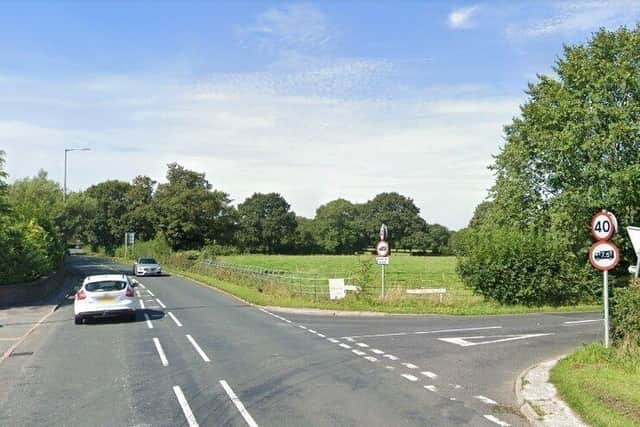Chorley prison roundabout plan 'safer than existing junction', inquiry told
and live on Freeview channel 276
The issue was revisited at the start of the second phase of the reopened public inquiry into a government bid to create a third jail in the village of Ulnes Walton, near Leyland, alongside the existing Garth and Wymott lock-ups.
When the the inquiry first reconvened during Easter week, it heard how the Ministry of Justice (MoJ) had attempted to address the road safety concerns that were amongst the reasons permission for the new prison was refused - first by Chorley Council, in December 2021, and then by a planning inspector who upheld that decision after hearing an appeal against it by the MoJ the following year.
Advertisement
Hide AdAdvertisement
Hide Ad

A transport witness appearing on behalf of the local authority at last month’s restarted proceedings warned that the installation of a mini-roundabout at the junction of the A581 Southport Road and Ulnes Walton Lane would have an “extremely unusual” six arms feeding into it.
Kevin Riley argued that the number of exits contravened guidance for mini-roundabout design - and would prevent the inclusion of “splitter islands” in order to improve the safety of the new layout.
However, he was challenged over his definition of a roundabout arm - with three of the six he was counting at the proposed new junction leading to private driveways.
When the inquiry resumed on Tuesday, Steven Yeates - a transport expert for the MoJ - said that vehicular access to a property did not constitute an arm, because it would not be part of the “adopted highway”.
Advertisement
Hide AdAdvertisement
Hide AdReferring to existing examples of mini-roundabouts elsewhere in Lancashire, Mr. Yeates said what he considered to be four-exit junctions would be regarded by Mr. Riley as having seven, because of the presence of driveways.
He said the planned layout on the A581 reduced the risk of collisions compared to the current T-junction at the location - because it would slow traffic down via calming measures on the approach and also provide more gaps for those leaving their homes via the roundabout.
Mr. Yeates concluded that the splitter islands sought by Mr. Riley would “probably cause more of a hindrance”.
He said that the raised design of the mini-roundabout would highlight the feature to motorists - and address concerns expressed in an independent road safety audit of the project, which warned the view of drivers on the A581 was likely to be drawn beyond the new junction - potentially causing them to miss it altogether.
Advertisement
Hide AdAdvertisement
Hide AdCombined with poorer visibility of the roundabout markings at night and in bad weather, the audit had suggested motorists might “occasionally misinterpret…the road layout and their requirement to give way to other road users”.
“This could result in collisions between vehicles and injuries to their occupants,” the document added.
The inquiry heard that changes had also been made to the proposed entrance to the new prison, off Moss Lane, in order to reduce the risk of speeding along that route.
Steven Yeates said a “raised table” at that point would “physically slow people down and…make sure..[they] are aware that they need to be driving at appropriate speeds”.
Advertisement
Hide AdAdvertisement
Hide AdThe inquiry was restarted last month after Communities Secretary Michael Gove had previously stepped in to give his government department the final say over the prison proposal. Ordinarily, that would have rested with the inspector who chaired the first appeal hearing, Tom Gilbert-Wooldridge.
Instead, Mr. Gove simply took the inspector’s conclusion into account - before suggesting that he would approve the plans if he could be persuaded the highway issues could be “satisfactorily addressed” .
Mr. Gilbert-Wooldridge is chairing the resumed hearing and will again make a recommendation to Mr. Gove, before the minister takes the final decision.
The inquiry is expected to conclude before the end of the week.
Comment Guidelines
National World encourages reader discussion on our stories. User feedback, insights and back-and-forth exchanges add a rich layer of context to reporting. Please review our Community Guidelines before commenting.